rolling plains, great lakes and vast wildernesses, rich in African wildlife from big cats to even bigger elephants and rhino. And away from its destinations that top wildlife enthusiasts’ wish lists, Kenya is also blessed with a tropical coastline, fringed with powder white sands lapped by stunning azure waters. With a huge choice of National Parks, game reserves and private concession areas, Kenya offers a wonderful safari experience. Choose from small intimate safari camps to grand lakeside colonial houses, or privately-owned ranches and farmhouses. There are also some excellent camps with special children’s clubs making Kenya ideal for a family safari. Game viewing is abundant and with a standout regional flight system you can easily visit two or more national parks on your safari. The Masai Mara is the most popular destination for game viewing, particularly during the time of migration (August to September), when game is seen in incredible multitudes. To the east is Amboseli National Park, the ideal location from which to view Mount Kilimanjaro, Africa’s highest mountain. Mount Kenya is one of the world’s highest national parks famous for its variety of wildlife and for the climbs offered on its ice cliffs and rock faces. Tsavo is the country’s largest national park and one of the world’s biggest game sanctuaries, with over 60 major species of mammal.
why Visit?
Kenya has long been a safari favorite. home to some of the world’s most famous national parks and reserves, with...
country overview
Kenya’s dry seasons normally occur June to October and December to mid March. The long rains normally come between mid-March and May, the short rains in November. A trip to see mountain gorillas in Rwanda combines well with a Kenyan safari in the Masai Mara. Kenya is an excellent family destination. Kenya has great beaches and coastal resorts including Lamu and Mombasa
 About Kenya
About Kenya
Kenya has long been a safari favorite – home to some of the world’s most famous national parks and reserves, with rolling plains, great lakes and vast wildernesses
rich in African wildlife from big cats to even bigger elephants and rhino. And away from its destinations that top wildlife enthusiasts’ wish lists, Kenya is also blessed with a tropical coastline, fringed with powder white sands lapped by stunning azure waters. With a huge choice of National Parks, game reserves and private concession areas, Kenya offers a wonderful safari experience. Choose from small intimate safari camps to grand lakeside colonial houses, or privately-owned ranches and farmhouses. There are also some excellent camps with special children’s clubs making Kenya ideal for a family safari. Game viewing is abundant and with a standout regional flight system you can easily visit two or more national parks on your safari. The Masai Mara is the most popular destination for game viewing, particularly during the time of migration (August to September), when game is seen in incredible multitudes. To the east is Amboseli National Park, the ideal location from which to view Mount Kilimanjaro, Africa’s highest mountain. Mount Kenya is one of the world’s highest national parks famous for its variety of wildlife and for the climbs offered on its ice cliffs and rock faces. Tsavo is the country’s largest national park and one of the world’s biggest game sanctuaries, with over 60 major species of mammal.
 Why Kenya
Why Kenya
Best time to visit is from June to February, however there are plenty of wildlife year round Kenya is an excellent family and Honeymooners destination.
Kenya has great beaches and coastal resorts including Lamu, Malindi, Diani and Mombasa Encounter the Maasai People and their unique cultural display You can enjoy Great Game Viewing All Year Round in Kenya Over 1 000 bird species have been in Kenya The Great wildebeest Migration is one of the seven new wonders of the world that can be witnessed in Kenya The black-maned lions of the Masai Mara can be viewed during game drive The best view of Mount Kilimanjaro is from Amboseli National Park in Kenya
 Best Places
Best Places
Amboseli National ParkAmboseli is a land of giants, where huge herds of elephants stand strong against a dramatic backdrop of Africa’s highest mountain: Mount
Kilimanjaro. Easily accessible and with effortless wildlife viewing, this popular national park defies its size and offers an impressive safari experience. One of Kenya’s smaller parks, Amboseli’s ecosystem is primarily savannah – and the low-lying vegetation makes the wildlife easier to spot. The park has a large concentration of wildlife, particularly in the dry season. There are over 1000 elephants here, including some of the largest in Africa. As well as the huge herds, catch sight of buffalos and lions in the open savannah, rolling hills and swamplands. Other wildlife inhabiting the grasslands wildlife includes cheetah, rhino, waterbuck, zebra and warthog amongst others. Though largely dry and dusty, Amboseli is also home to swamplands, fed by underwater springs from the melt waters of Mount Kilimanjaro. These lush green swamplands attract wallowing elephants and hippo, as well as buffalo and birdlife. More than 400 species of bird can be found, including the rare Taita falcon and the southern banded harrier eagle. The hot and humid rainy season lasts from March to May, while the shorter rains fall during November and December. January and February are hot and dry. July to October is warm and dry, and is often seen as the best season for comfortable game viewing. For birdwatchers, the best months to see migratory birds are from October to January. Close by lies Chyulu Hills National Park, combines breathtaking volcanic scenery with rich wildlife. Extensive forests cover conical mountains, creating thrilling caves for underground exploration. The snow-covered peaks of Mount Kilimanjaro are clearly visible from the crest of the Chyulu Hills, rising in the distance beyond spectacular views over rolling plains of fertile volcanic soil. A subterranean river pushes above ground in fresh water springs on the surrounding plains. LAIKIPIA PLATEAU A remote and truly wild corner of Kenya, the Laikipia National Park boasts incredible game viewing in a spectacularly beautiful setting. Two rivers, the Ewaso Ng’iro and Ewasa Narok run through the area, attracting a rich variety of wildlife, including the second largest population of elephant in Kenya. Vast open plains in the shadow of the snow-capped silhouette of Mount Kenya create a tranquil and secluded setting, where game drives encounter abundant wildlife with not another vehicle in sight. A wild yet romantic haven, Laikipia shelters not only the Big Five but a variety of rare and endangered species, including African wild dog, Grevy’s zebra and the semi-aquatic sitatunga antelope. LAKE NAIVASHA & LAKE NAKURU The Great Rift Valley is a geological phenomenon and home to Kenya's incredible lakes. Discover Lake Naivasha, the valley's highest lake that is a hotspot for hippos, and sail across the freshwater lake on the lookout for an incredible 400 species of bird. Be sure to visit Lake Nakuru, a soda lake home to over one million flamingos, their pink plumes ruffling on the water’s surface. Surrounding the lakes, wildlife includes leopards, lions and black and white rhinos. Located in Kenya’s Great Rift Valley, northwest of Nairobi (one and half hours drive). Kenya’s Rift Valley is home to eight lakes – three freshwater and five alkaline. Of the most popular lakes, Naivasha is the most southerly and Nakuru the furthest north. Broad yet shallow, Lake Naivasha lays claim to a unique history, having entirely dried up at the beginning of the 20th century, only to reappear years later, brought back to life by heavy rains. Beautiful and serene in the daytime, the lake’s waters are often whipped into dramatic waves by late afternoon thundershowers. This turbulent characteristic led to the local Maasai naming the lake Na’iposha, meaning “rough water”. The shores of the lake form part of Hell’s Gate National Park, named for its huge red cliffs and the bubbling thermal springs that they shelter. Lake Nakuru is best known for the million flamingos that line its soda-crusted shoreline in a stunning vision of pink. Over 400 bird species can be found – although be aware that the number of birds here fluctuates dependent on water level, so it’s best to check with the park if this is your primary reason for visiting. Lake Nakuru National Park also provides habitat for lion, leopard, buffalo and Rothschild giraffe, as well as white rhino and the endangered black rhino. The sapphire-blue soda lake of Lake Elementaita is another of the Eastern Rift Valley lakes, lying between Naivasha and Nakuru. The Soysambu conservancy on the west of the lake covers two thirds of its shoreline and is East Africa’s only nesting site for the great white pelican. Rothschild giraffe also breed here, and other wildlife includes eland, warthog and zebra. The lakes’ wetter months are typically April to May and October to December, but the area tends to receive less rainfall than other parts of the country and roads are passable year-round. The most popular times to visit are from June to September and January to March. The soda lakes are particularly dry and dusty in January and February. LEWA WILDLIFE CONSERVANCY The Lewa Wildlife Conservancy is a private reserve in north-east Kenya near to Mount Kenya National Park, Samburu and the Aberdares. The number of visitors to Lewa has been greatly restricted, giving you the opportunity to experience Africa at its wildest. The Conservancy had its beginnings as a cattle farm. It was run by the Craig family, who valued the wildlife that shared the land with their cattle. In the mid 1980s, the poaching of rhino in Kenya had reached its zenith and the family, along with Mrs. Anna Merz, realised that the only way to preserve the species was to create a sanctuary - and so Lewa Wildlife Conservancy was born. Lewa now spans over 24 281 hectares (60 000 acres) of pristine wilderness and is home to black and white rhino, the elusive sitatunga (an aquatic antelope), the endangered Grevy’s zebra, lion, leopard, elephant and a flourishing population of bird species. Lewa also boasts two important archaeological sites - a one million year old hand-axe site and a pastoral cave. MERU NATIONAL PARK Meru National Park was made famous by conservationists George and Joy Adamson, and the film based on their book Born Free, the famous story of Elsa the lioness. Meru is a park of great scenic beauty, featuring 13 rivers and supporting a wide range of diverse habitats. It is a paradise for birdwatchers and home to several rare bird species. A section of the park has been designated a wilderness area with no roads, which adds to the air of wild, remote seclusion that is characteristic of Meru National Park. Of all the Kenya parks Meru presents the widest variety of landscapes and habitats. Forest, swamp and savannah are pierced by a number of rivers all rising on Mount Kenya and all destined to reach the Tana River which forms the park's lower boundary. In this marvelous sanctuary a great variety of wildlife exists. All the 'Big Five' are present and the park is one of the best in which to locate cheetah and leopard. High precipitation levels mean that the area is covered in thick grass, jungle and marsh, sometimes making game hard to spot. On the other hand, this only adds to Meru National Parks’ wild, untamed atmosphere. MASAI MARA NATIONAL GAME RESERVE The most famous game reserve in the world, the awe-inspiring Maasai Mara is what safari dreams are made of – rolling grasslands, wide open savannah and rich in wonderful African wildlife. Here is the place to witness the incredible annual wildebeest migration between June and October as over a million animals thunder across the plains in search of water and grazing – but the Maasai Mara has mass appeal all year round. Spot prides of lions basking in the shade or seek out an elusive solo leopard. And a magical hot-air balloon safari here is a must – gently drift over the plains as the sun rises, with game roaming below. The Masai Mara National Reserve is located in the Rift Valley in southwest Kenya, bordering Tanzania, 45 minutes' flight or approx. six hours' drive from Nairobi. The Maasai Mara is home to an excellent year-round concentration of game and is renowned for its annual visit by the two million animals that make up the Great Migration. Covering an impressive 1 115 km² (430 square miles), the Masai Mara is a land of breathtaking vistas, abundant wildlife and endless plains. The Masai Mara was made famous by the book Out of Africa by Karen Blixen, which was later made into a movie starring Robert Redford and Meryl Streep. The rainy seasons are generally from April to May and during November. July to October is the dry season and the most popular time to visit, when the grass is at its most fertile after the rains and the Great Migration herds are usually in the Mara. December and January are the warmest months. SAMBURU & SHABA GAME RESERVE With its incredible wildlife and picturesque surroundings, it's a real surprise that Samburu National Park remains one of Kenya's lesser-visited regions. However, its peaceful atmosphere and the authentic wilderness experience set it apart from the country's better-known wildlife reserves. Its arid landscape is home to ‘dry country’ animals rarely found outside the park, including the long-necked gerenuk, Grant’s gazelle and reticulated giraffe. Samburu National Reserve is situated on the banks of the Ewaso Ngiro River in the Rift Valley province in northern Kenya, 45 minutes flight or approx. five hours’ drive from Nairobi. Lesser visited than its more southerly neighbours, this relatively small reserve’s main attraction is its ‘dry country’ animals, rarely found in other regions. Species include the long-necked gerenuk, Grant’s gazelle, beisa oryx, reticulated giraffe and Grevy’s zebra. Shaba is a relatively small national park lying just east of Samburu and only 70 kilometres north of Mount Kenya. This exceptionally picturesque park was made famous by the late Joy Adamson and her lioness Elsa, and is often referred to as ‘Born Free’ country. Along with Buffalo Springs and Samburu, Shaba forms a large conservation area in the remote reaches of northern Kenya. The landscape here is arid, with open plains and clusters of acacia trees. But the river provides a life source for a number of animals as well as playing host to a large population of Nile crocodile. Lion, leopard, cheetah, buffalo, elephant and diverse birdlife – including the Somali ostrich, Verreaux’s eagle and vulturine guinea fowl – can all be found here. The long rainy season is from April to May, with short rains falling in November. July to October and December to March are typically hot and dry. THE MOUNT KENYA AND THE ABERDARES Travel to where snowcapped mountains sit on the equator, safari experiences traverse through deep forests, and where Queen Elizabeth ascended to the British throne – Mount Kenya & the Aberdares is certainly a unique region. Spot elephants, buffalos, giant forest hogs and rhinos wandering free in The Aberdares National Park and explore the foothills of snowcapped Mount Kenya. Savour the crisp mountain air and explore the lower slopes of Mount Kenya with game drives, forest walks and mountain hikes. This area is popular as part of a longer safari itinerary, perhaps taking in the Maasai Mara and Amboseli, too. The rainy season in The Aberdares generally lasts from March to May, with a shorter wet season occurring from October to December. A lot of rain falls during these times, and roads can become impassable. January, February and June to September are considered the most pleasant times to visit. TSAVO EAST & WEST NATIONAL PARK Boasting spectacular varied landscapes and abundant wildlife, Kenya's largest national park is divided into Tsavo East and Tsavo West. Explore Tsavo West's rugged terrain and perhaps visit the underwater viewing chamber at Mzima Springs, source of much of Mombasa's water supply and often frequented by hippos and crocodiles. Tsavo East's vast expanse of open savannah offers the opportunity to see impressive herds of elephants and spot magnificent lions. Easily combinable with a beach stay in Mombasa. Tsavo’s soil is rich and red in colour and this creates the illusion of magnificent red elephants – which are actually covered in dust from the soil. The park is also home a variety of wildlife including rhino, buffalo, leopard, lion, waterbuck, lesser kudu, giraffe and gerenuk. Travel deep into the park for wildlife viewing away from the crowds. Just outside of Tsavo lies the private conservancy of Taita Hills – a sanctuary providing safe habitat for over 50 species of mammal and 300 species of bird. There are two rainy seasons: the long rains from March to April and the short rains during November and December. January and February are typically hot and dry while July to October is warm and dry.
 Country Facts
Country Facts
Official name: Republic of Kenya (formerly British East Africa) Capital city: Nairobi Time Zone: GMT +3 Hours Phone Code: +254 Electrical: 240 Voltage, 50 Frequency,
Gplug. Language: English (official), Kiswahili (official), numerous indigenous languages Religion: Protestant 45%, Roman Catholic 33%, Muslim 10%, indigenous beliefs 10%, other 2% note: a large majority of Kenyans are Christian, but estimates for the percentageof the population that adheres to Islam or indigenous beliefs vary widely Weather Subtropical. Summer: December – March, Winter: July – August, Wet season Apr – May Geography: Located in Eastern Africa, Kenya is bordering the Indian Ocean, Ethiopia (861 km), Somalia (682km), Tanzania (769km), Uganda (933km) and Sudan (232km). Total: 585, 650 square km Land: 569,250 square km Water: 13,400 square km Coastline: 536km. Coastline 1,424 km

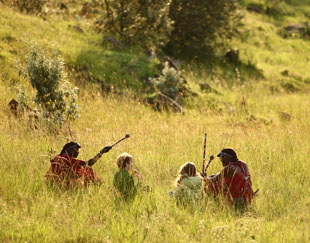


All The Best Tours
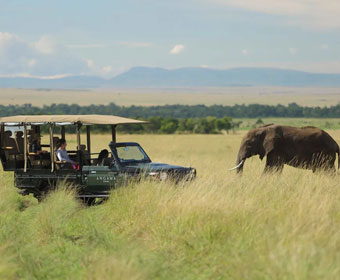
- Country : 1
- Locations : 5
- Duration : 8 days
- Accomodation : luxury
- Best Seasons : May, June, July

- Country : 1
- Locations : 7
- Duration : 9 days
- Accomodation : luxury
- Best Seasons : May, June, July
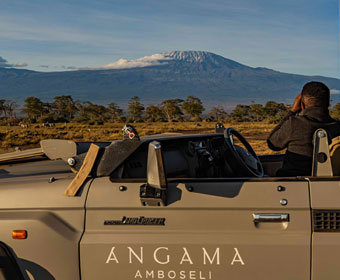
- Country : 1
- Locations : 4
- Duration : 8 days
- Accomodation : luxury
- Best Seasons : May, June, July
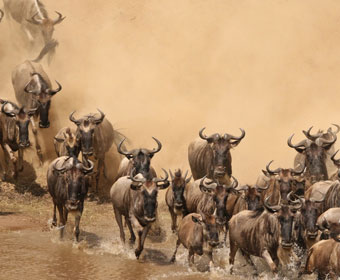
- Country : 1
- Locations : 5
- Duration : 8 days
- Accomodation : luxury
- Best Seasons : May, June, July

- Country : 1
- Locations : 5
- Duration : 8 days
- Accomodation : luxury
- Best Seasons : May, June, July
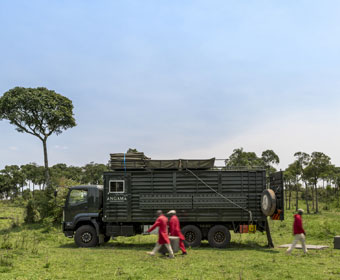
- Country : 2
- Locations : 10
- Duration : 8 days
- Accomodation : luxury
- Best Seasons : May, June, July
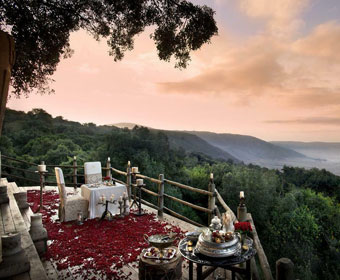
- Country : 3
- Locations : 9
- Duration : 8 days
- Accomodation : luxury
- Best Seasons : May, June, July
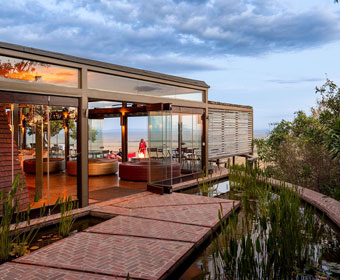
- Country : 1
- Locations : 5
- Duration : 8 days
- Accomodation : luxury
- Best Seasons : May, June, July
